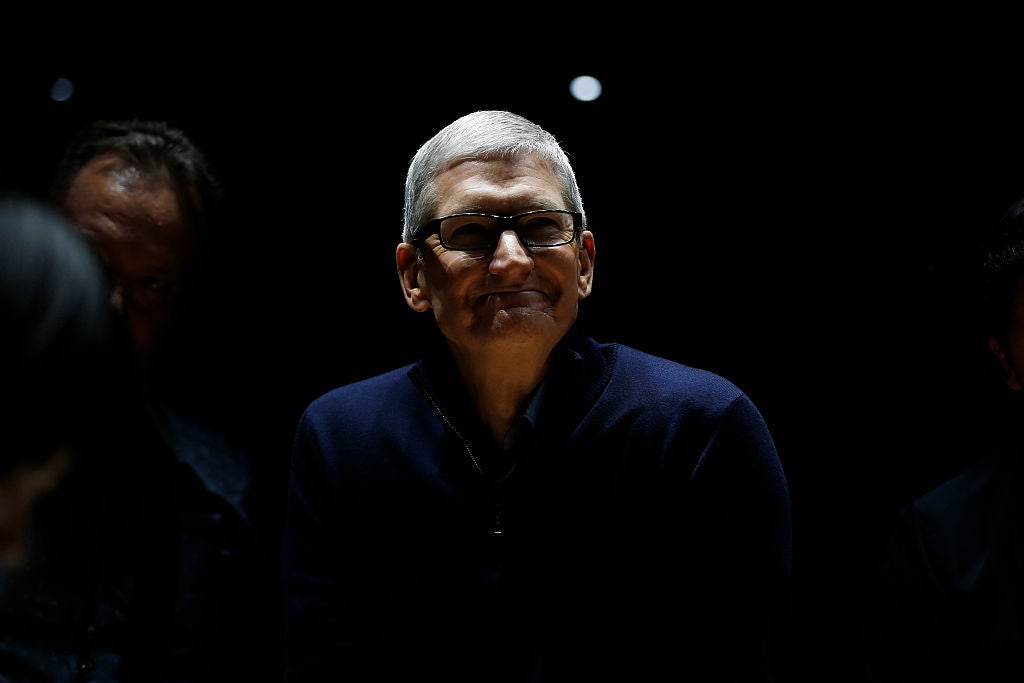Apple is building augmented reality technology that could end up in smart glasses, report claims
Initially, AR will be included in the iPhone. But eventually it will make its way onto our bodies

Your support helps us to tell the story
From reproductive rights to climate change to Big Tech, The Independent is on the ground when the story is developing. Whether it's investigating the financials of Elon Musk's pro-Trump PAC or producing our latest documentary, 'The A Word', which shines a light on the American women fighting for reproductive rights, we know how important it is to parse out the facts from the messaging.
At such a critical moment in US history, we need reporters on the ground. Your donation allows us to keep sending journalists to speak to both sides of the story.
The Independent is trusted by Americans across the entire political spectrum. And unlike many other quality news outlets, we choose not to lock Americans out of our reporting and analysis with paywalls. We believe quality journalism should be available to everyone, paid for by those who can afford it.
Your support makes all the difference.Apple hopes to eventually make smart glasses that will put computers on your face.
That's according to a new report that claims the company is working on augmented reality as its next major product. It will initially come as a feature of the iPhone, the report claims, but eventually make its way onto people's faces.
Apple is now on an ambitious bid to bring the technology to the people, according to the report by Bloomberg, and that effort is being led by Tim Cook. It has built a huge team combining hardware and software to create special augmented reality (AR) products.
That team is working on a range of different implementations, according to the same report. Those include special glasses that would connect over Bluetooth to an iPhone and send content like films, maps and more to the person wearing them – though that technology is some way off, those same features will come to the iPhone soon.
Apple has already released a range of different wearable products in recent years, like the Watch and its AirPods, which put Siri into people's ears as well as working as wireless earphones.
Augmented reality is less famous than the similar virtual reality, and in AR people are less completely immersed and just have technology adding to their vision rather than taking it up entirely. Tim Cook has said that people won't care for virtual reality much, and that instead the company is focused on working on augmented reality.
The dream way of doing that is building glasses, according to the Bloomberg report. Those glasses will be tethered to the iPhone, like the Watch, allowing the handset to do the heavy lifting, downloading and provide much of the battery while information is displayed on the glasses.
But it will require new software, too, including special apps and an operating system to run on the glasses, as well as a new chip to put inside them. Similar technologies were developed for the Apple Watch, which runs its own apps and using its operating system.
Building glasses is a risky strategy. Google famously released its Glass in 2013 – but that became known mostly through mockery, didn't take off and was discontinued by the company in 2015.
Apple's response appears to be hiring a huge range of people with expertise across a variety of different industries to make its own glasses. It has hired people who worked on Google and Microsoft's own augmented reailty headsets, according to the report, as well as buying up companies that make similar products. It has also moved people from the team that developed the Apple Watch and other products into its AR team.
Apple has also filled out the team with iPhone, camera and optical lens engineers, it said. Some of those have come from the biggest film companies in the world, like those from Weta Digital, the special effects firm that worked on King Kong and Avatar.
But before the glasses arrive, similar features are set to the come to the iPhone. Those features might include the ability to take a picture and then focus on different elements of it at a later date, for instance, or allow virtual objects to be placed onto a real picture like on Snapchat.
Join our commenting forum
Join thought-provoking conversations, follow other Independent readers and see their replies
Comments